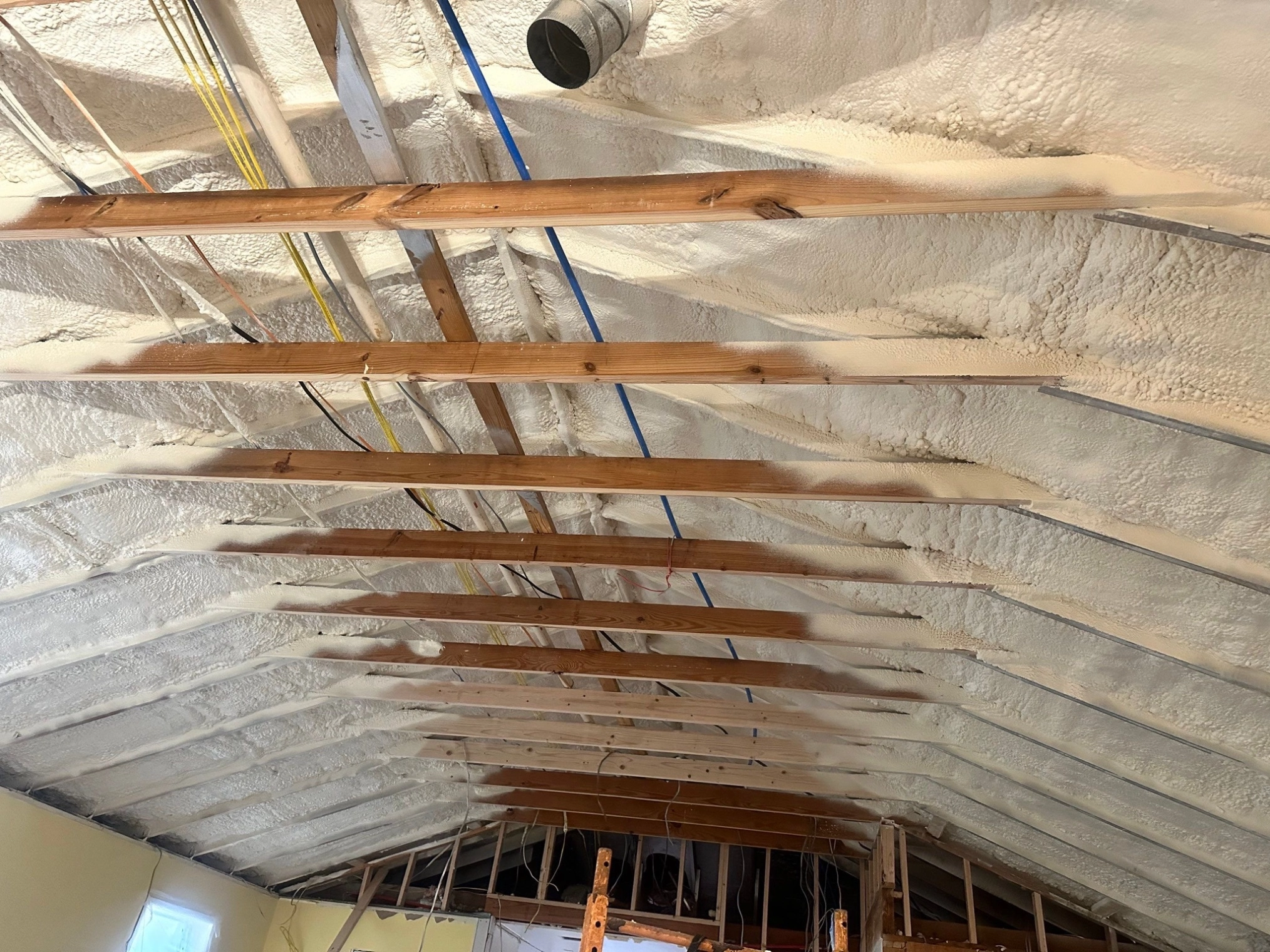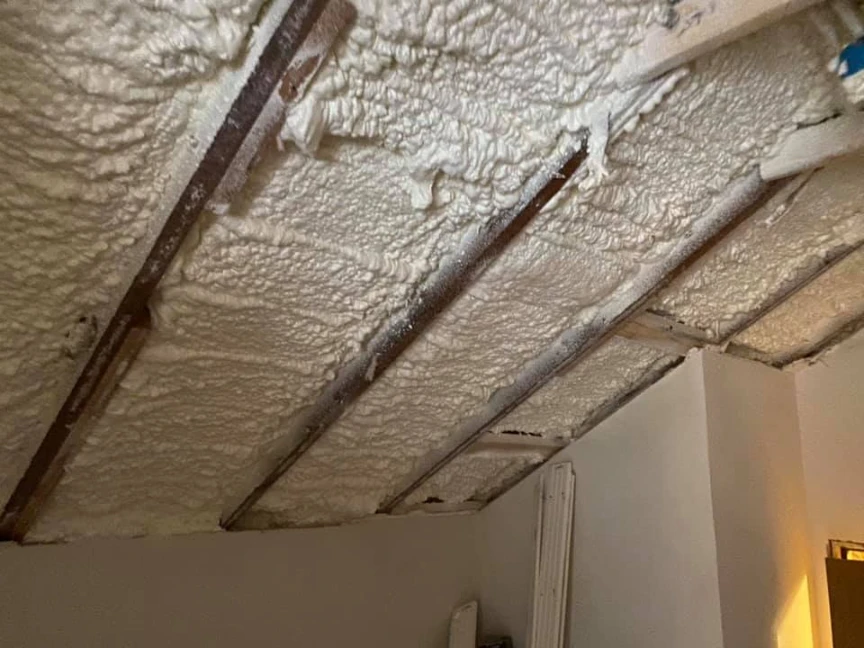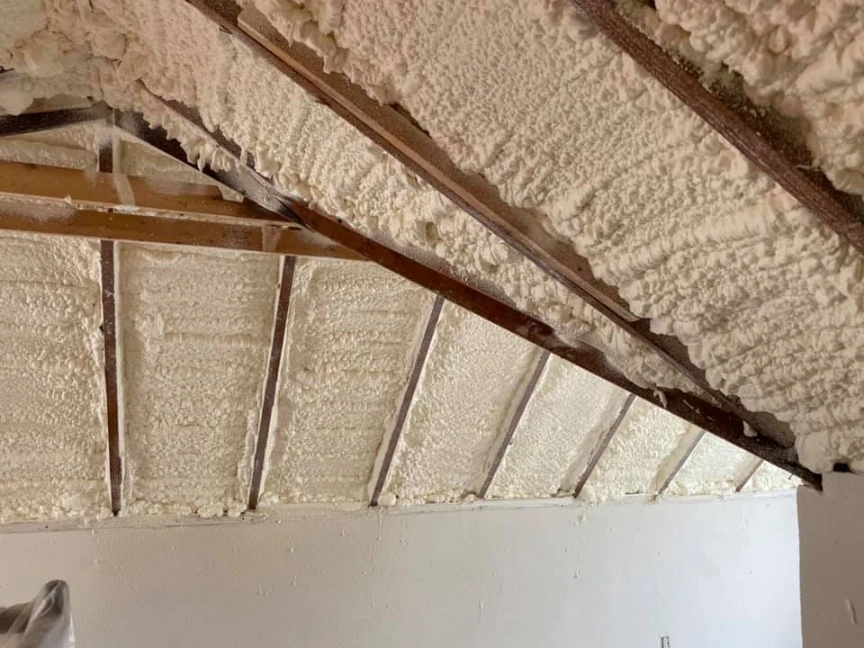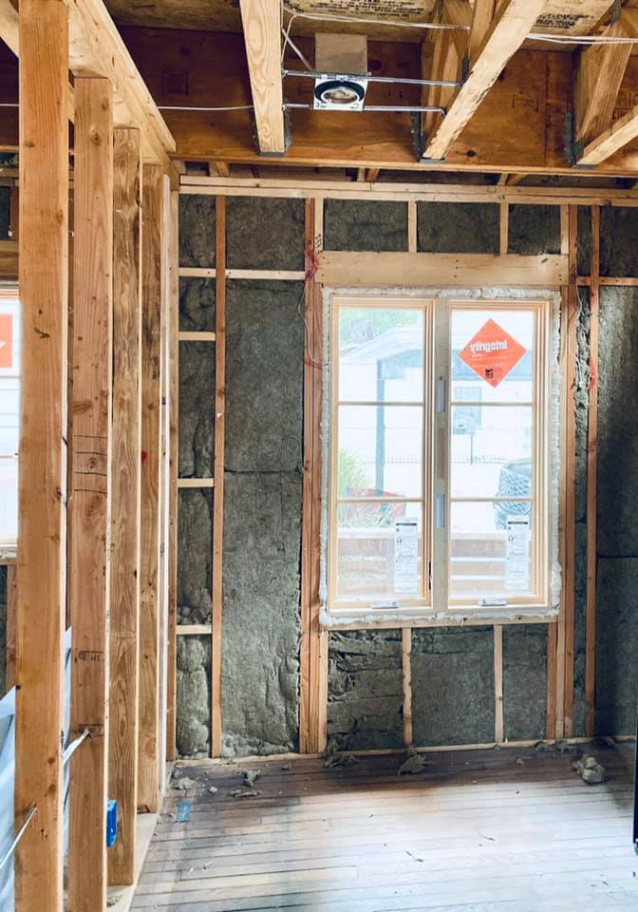Insulation’s primary job is to slow the transfer of heat, but its effectiveness is severely limited if air can move freely through hidden gaps in a building’s structure. These gaps and cracks create paths for conditioned air to escape and outside air to enter, a process known as air leakage. Effective insulation solution works together with air sealing to stop this movement. By filling cavities and creating a continuous barrier, insulation stops convective heat loss, which is the energy carried by moving air. When air leakage is controlled, the insulation can properly resist conductive and radiant heat transfer, keeping the indoor temperature stable and reducing the workload on heating and cooling systems.
The Science of Heat Transfer in Homes
Heat naturally moves from warmer areas to cooler areas until a temperature balance is reached. In a home, this process occurs through three primary mechanisms: conduction, convection, and radiation.
- Conduction: This is heat transfer through direct contact. Heat moves through solid materials, like the studs in your walls or the glass in your windows. A hot pan handle is a classic example of conduction.
- Convection: This is heat transfer through the movement of fluids, including air. In a house, warm air rises and escapes through leaks in the attic, while cold air is pulled in through gaps in the foundation. This creates uncomfortable drafts and is a major source of energy waste.
- Radiation: This is heat transfer through electromagnetic waves. The warmth you feel from the sun or a fireplace is radiant heat. During the summer, the sun radiates heat onto your roof, which can then transfer into your living space.
Properly installed insulation disrupts all three of these processes. It reduces conduction because the material itself is not a good conductor of heat. It stops convection by preventing air from moving through wall cavities. Finally, some insulation types, like those with a foil facing, can block radiant heat.
Where Hidden Gaps Occur
Even a well-insulated house can leak energy if small gaps are not sealed. These openings are often found in predictable places where different building materials meet or where holes have been cut for utilities.
Common locations for air leakage include:
- Around window and door frames
- Through recessed lighting fixtures in the ceiling
- Behind electrical outlets and switch plates
- Where plumbing pipes and wiring enter walls
- Along the joint between the foundation and the home’s framing (the sill plate)
- Through attic access hatches and drop-down stairs
Bonus Tip: A professional energy audit often includes a blower door test. This test depressurizes the house, making it easy to find even the smallest leaks with a smoke pencil or thermal camera. It takes the guesswork out of locating problem spots.
How Different Insulation Types Address Gaps
To address these gaps effectively, it’s crucial to understand that not all insulation types are created equal when it comes to sealing them. Some materials insulate well but do little to stop airflow, while others provide both thermal resistance and an air barrier in one application. A report from the U.S. Department of Energy notes that air leaks can account for 25% to 40% of the energy used for heating and cooling in a typical home. This highlights why the gap-sealing ability of insulation is so important.
A Quick Comparison of Insulation Materials
| Insulation Type | Gap-Sealing Ability | Typical R-Value (per inch) | Common Applications |
|---|---|---|---|
| Spray Foam | Excellent | 3.5 – 6.5 | Attics, walls, rim joists, crawl spaces |
| Fiberglass Batts | Poor | 3.1 – 4.3 | Walls, floors, attics (requires separate air barrier) |
| Blown-In Cellulose | Good (when dense-packed) | 3.2 – 3.8 | Attics, existing walls |
| Rigid Foam Board | Good (seams must be taped) | 4.0 – 6.5 | Foundations, exterior walls, roofs |
The Power of Expanding Foam
Spray foam insulation is unique because it expands after being applied, filling every crack and crevice to create a continuous air barrier. This makes it exceptionally good at stopping energy loss from hidden gaps.
- Open-Cell Spray Foam: This type is softer and more flexible. It’s an excellent air barrier and also helps with sound reduction.
- Closed-Cell Spray Foam: This is a more rigid and dense material. It offers a higher R-value per inch and acts as a vapor barrier, preventing moisture from passing through.
Traditional Insulation and Air Barriers
Fiberglass batts and blown-in cellulose are effective insulators, but they don’t stop air movement on their own. Air can still pass through and around them. For these materials to work as intended, they must be paired with a dedicated air barrier, like house wrap, drywall, or carefully taped rigid foam sheathing. When blown-in insulation is ‘dense-packed’ into a wall cavity, it is installed so tightly that it significantly reduces air convection. However, it still relies on the surrounding materials to form the primary air seal.
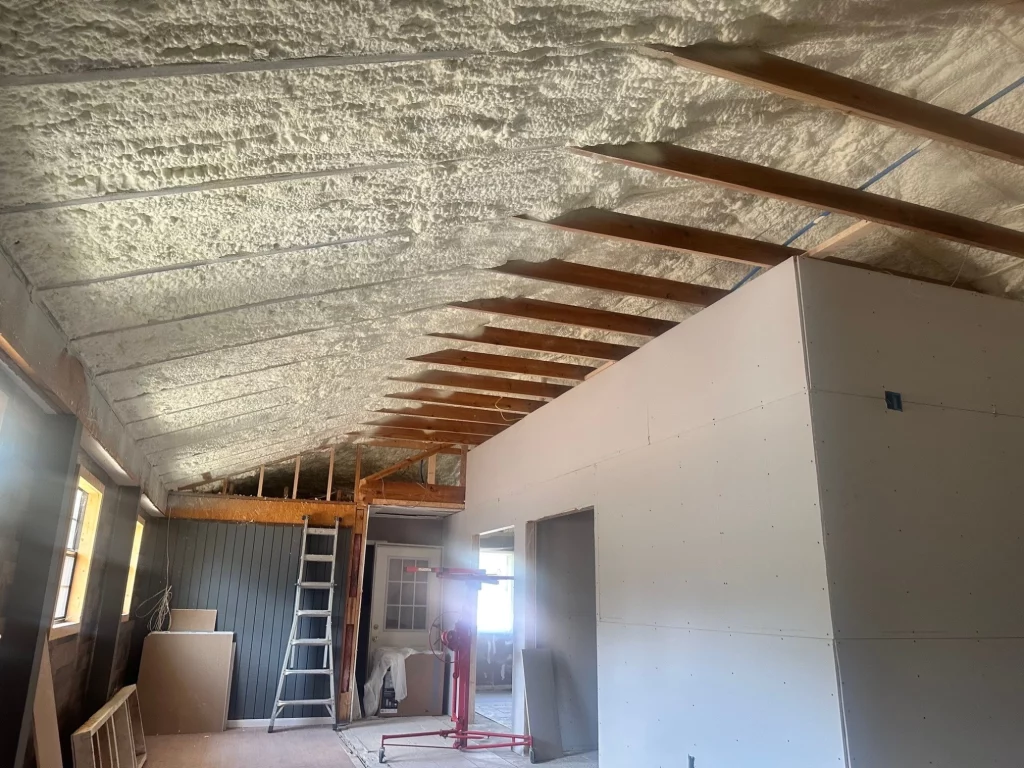
Things to Consider Before Sealing Your Home
Making a home more airtight is a great way to save energy, but there are a few things to keep in mind before you start sealing every opening.
Home Ventilation Needs
Homes need to breathe. A certain amount of fresh air is necessary to vent moisture and indoor pollutants. Modern, energy-efficient homes that are sealed very tightly often use mechanical ventilation systems, like a Heat Recovery Ventilator (HRV) or Energy Recovery Ventilator (ERV), to ensure good indoor air quality, a practice supported by the Environmental Protection Agency. Sealing an older home without considering ventilation can sometimes trap moisture or lead to poor indoor air quality.
Material Compatibility
When sealing gaps yourself, make sure to use the right product for the job. Use caulk for small cracks around stationary trim and window frames. Use expanding foam sealant for larger gaps around pipes or in the attic. Weatherstripping is best for moving parts like doors and operable windows. Always check that the product is compatible with the materials you are applying it to.
Bonus Tip: A simple way to check for drafts is the incense stick test. On a cool, windy day, carefully hold a lit incense stick near windows, doors, and electrical outlets. If the smoke wavers or is blown into the room, you’ve found an air leak.
Frequently Asked Questions About Home Insulation
What is the difference between an air barrier and a vapor barrier?
An air barrier’s job is to stop air from moving through the building envelope. A vapor barrier, or vapor retarder, is designed to stop water vapor from passing through a material. Some materials, like closed-cell spray foam, can function as all three: an insulator, an air barrier, and a vapor barrier.
How much can I really save by air sealing?
The amount you can save depends on your climate, your home’s condition, and your energy costs. However, data from ENERGY STAR suggests that homeowners can save an average of 15% on heating and cooling costs by air sealing their homes and adding attics and crawlspaces insulation.
Does new insulation smell or release chemicals?
Most modern insulation materials are designed to be safe and stable once installed and cured. Some products, like spray foam, may have an odor during application, which is why professional installers use ventilation and require homeowners to be away for a set period. Once cured, the foam is inert. Products with a GREENGUARD certification have been tested for low chemical emissions.
Will sealing gaps in my home help with noise reduction?
Yes, sealing air gaps can significantly reduce the amount of outside noise that enters your home. Air leakage paths are also paths for sound. Materials like dense-packed cellulose and open-cell spray foam are particularly effective at dampening sound waves.
Making Smart Decisions for Your Home’s Energy Efficiency
Focusing only on an insulation’s R-value misses a large part of the picture. True energy efficiency comes from creating a complete thermal envelope that controls heat transfer and air leakage. Stopping airflow through hidden gaps is just as important as having a high R-value in your attic. By understanding how heat moves and where your home is most vulnerable, you can make informed decisions that lead to lower energy bills and a more comfortable living space.
Get a Professional Assessment
The best way to understand your home’s specific needs is through a thorough evaluation. For a detailed inspection of your property’s insulation and air leakage points, the team at Stellrr Insulation & Spray Foam provides comprehensive assessments. You can contact an expert by calling (512) 710-2839 or sending an email to info@stellrr.com to discuss the most effective solutions for your home.
Sources
- U.S. Department of Energy – Provides information on air sealing techniques and statistics on energy loss from air leakage.
- ENERGY STAR – Offers data and guidance on the potential savings from air sealing and insulating homes.
- Environmental Protection Agency – Details the importance of proper ventilation for maintaining indoor air quality in homes.


